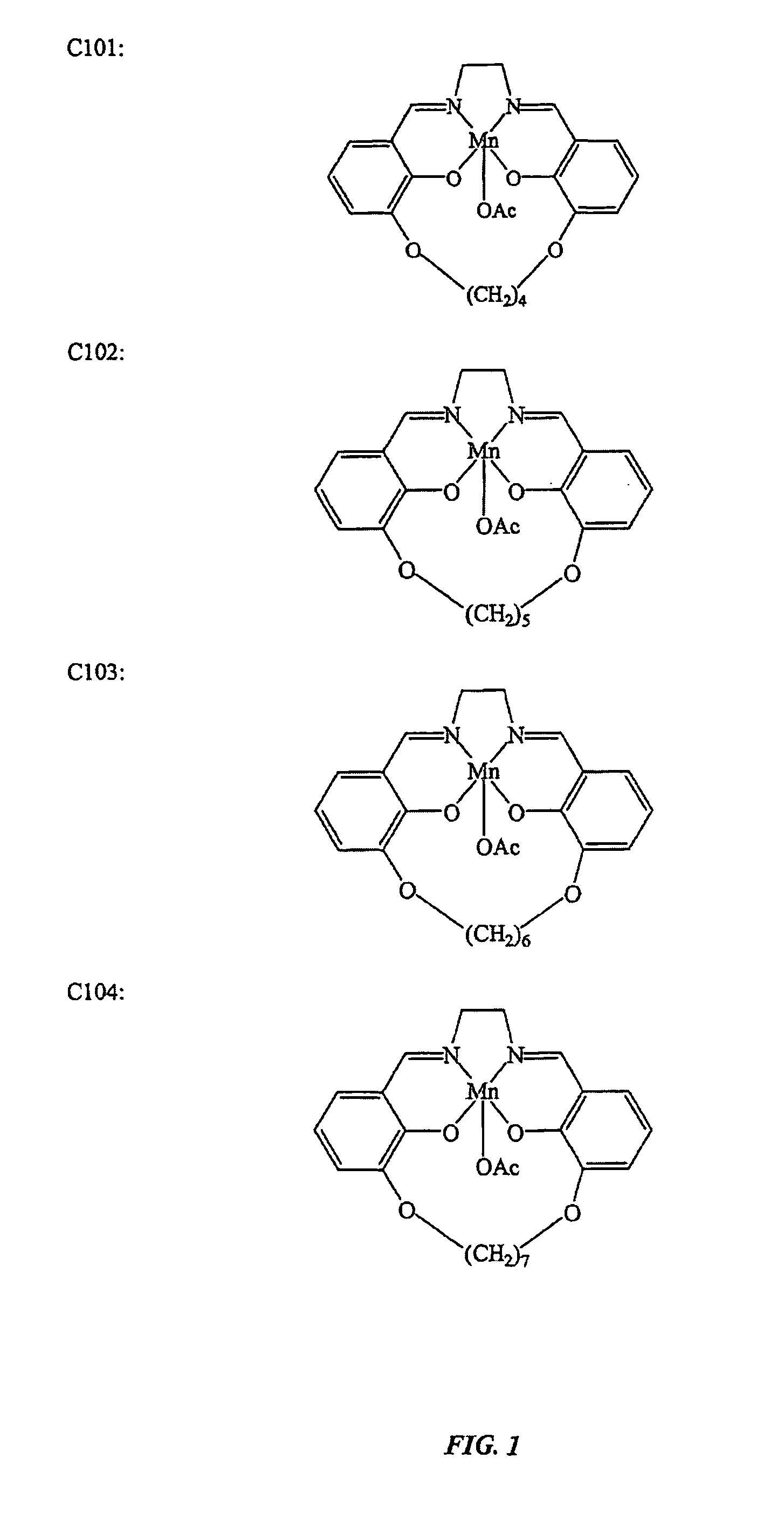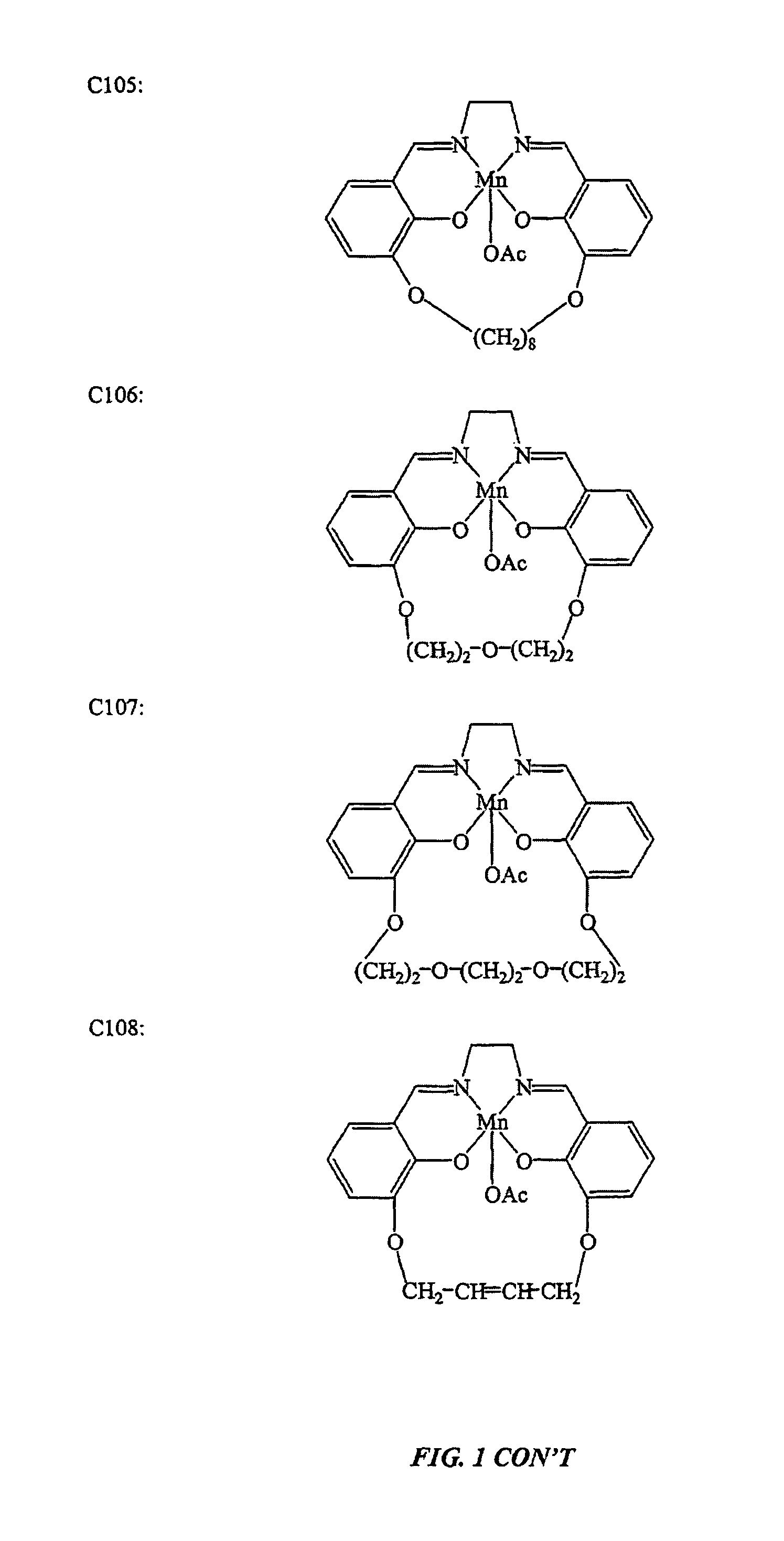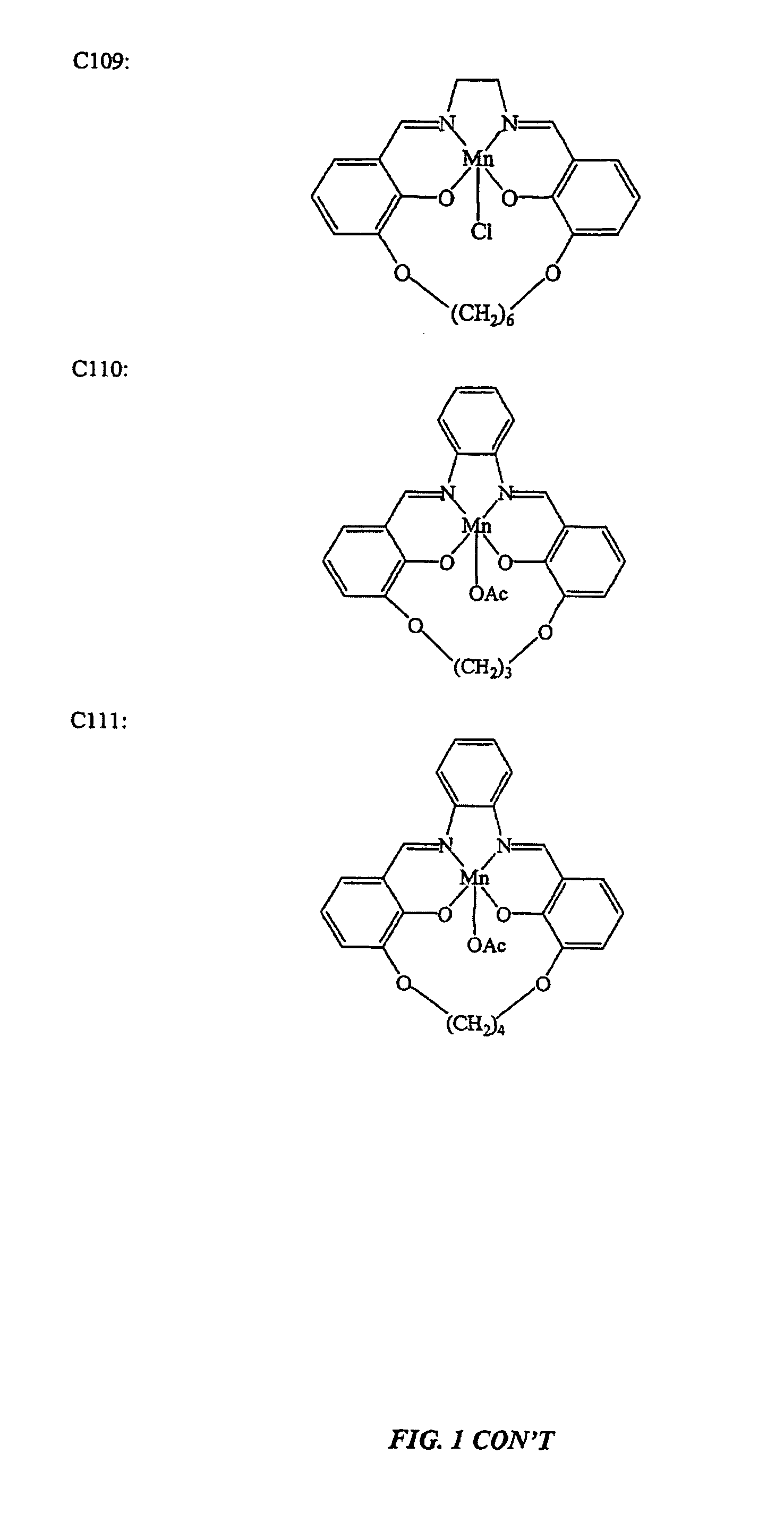Cyclic salen-metal compounds as scavengers for oxygen radicals and useful as antioxidants in the treatment and prevention of diseases
a technology oxygen radicals, applied in the field of antioxidant compositions, can solve the problems of short half-lives of free radicals, mutations and/or cell death, and high concentrations of various forms of reactive oxygen species, and achieve the effect of increasing stability or stability of salen metal compounds
- Summary
- Abstract
- Description
- Claims
- Application Information
AI Technical Summary
Benefits of technology
Problems solved by technology
Method used
Image
Examples
example i
I. Example I
[0144]This example illustrates the preparation of salen-metal compounds and, in particular, cyclic salen-metal compounds having a bridging group at the 3,3′-position.
[0145]A. General Method for the Preparation of Salen-Metal Compounds:[0146]Step I: Preparation of 2-hydroxy-3-alkyloxybenzaldehyde:
[0147]
[0148]To a suspension of NaH (2.3 equivalents) in dry DMSO (10 ml / g) under Argon is added a solution of 2,3-dihydroxybenzaldehyde (1 equivalent) in dry DMSO (4 ml / g), over a period of 1 h, under vigorous stirring. The temperature was kept below 25° C. After stirring for 1 h, 1 equivalent of RX, i.e., the alkyl halide (chloride, bromide or iodide), was added in 1 portion. This mixture was stirred for 24 h. This mixture was then quenched with water. The resulting solution was extracted twice with ethyl acetate. These organic extracts, which contain small amounts of the unreacted alkyl halide, were discarded. The aqueous layer was acidified with 6M HCl to a pH of about 1 and e...
example ii
II. Example II
[0191]This example illustrates the various assays that can be used to screen the cyclic salen-metal compounds (CSMCs) of the present invention for biological activity. In addition, suitable assays for screening the cyclic salen-metal compounds of the present invention for biological acitivity are also disclosed in U.S. Pat. Nos. 5,403,834, 5,834,509, 5,696,109 and 5,827,880, the teachings of which are incorporated herein by reference for all purposes.
[0192]A. Assays for Screening for Catalytic Activities
[0193]The following assays can be used to screen for antioxidant catalytic activity. More particularly, the following assays can be used to screen for superoxide dismutase and catalase activities.
[0194]The SOD activity of the compounds can be determined by evaluating the inhibition of the reduction of cytochrome c produced by the oxygen free radical generating system, xanthine plus xanthine oxidase. Cytochrome c reduction is monitored spectrophotometrically at 550 nm ac...
example iii
III. Example III
[0232]This example illustrates a mouse model that can be used to screen for delayed hypersensitivity (DTH).
[0233]Mice were pre-sensitized with 3% oxazolone on the abdomen and on day 8, challenged with 1.7% oxazolone topically on one ear to induce an inflammatory edema. C113 or ethanol, i.e., the vehicle control, was applied topically to the ear immediately after the oxazolone challenge. The ear edema is measured by comparing the tissue water content (the wet weight minus the dry weight) of the challenged car to that of the control ear. The percent edema (% water in the right / left ear) in the vehicle control was 8.1% and 4.6% for a C113 dose of 27 nmoles / ear.
PUM
| Property | Measurement | Unit |
|---|---|---|
| weight | aaaaa | aaaaa |
| pH | aaaaa | aaaaa |
| body weight | aaaaa | aaaaa |
Abstract
Description
Claims
Application Information
 Login to View More
Login to View More - R&D
- Intellectual Property
- Life Sciences
- Materials
- Tech Scout
- Unparalleled Data Quality
- Higher Quality Content
- 60% Fewer Hallucinations
Browse by: Latest US Patents, China's latest patents, Technical Efficacy Thesaurus, Application Domain, Technology Topic, Popular Technical Reports.
© 2025 PatSnap. All rights reserved.Legal|Privacy policy|Modern Slavery Act Transparency Statement|Sitemap|About US| Contact US: help@patsnap.com



